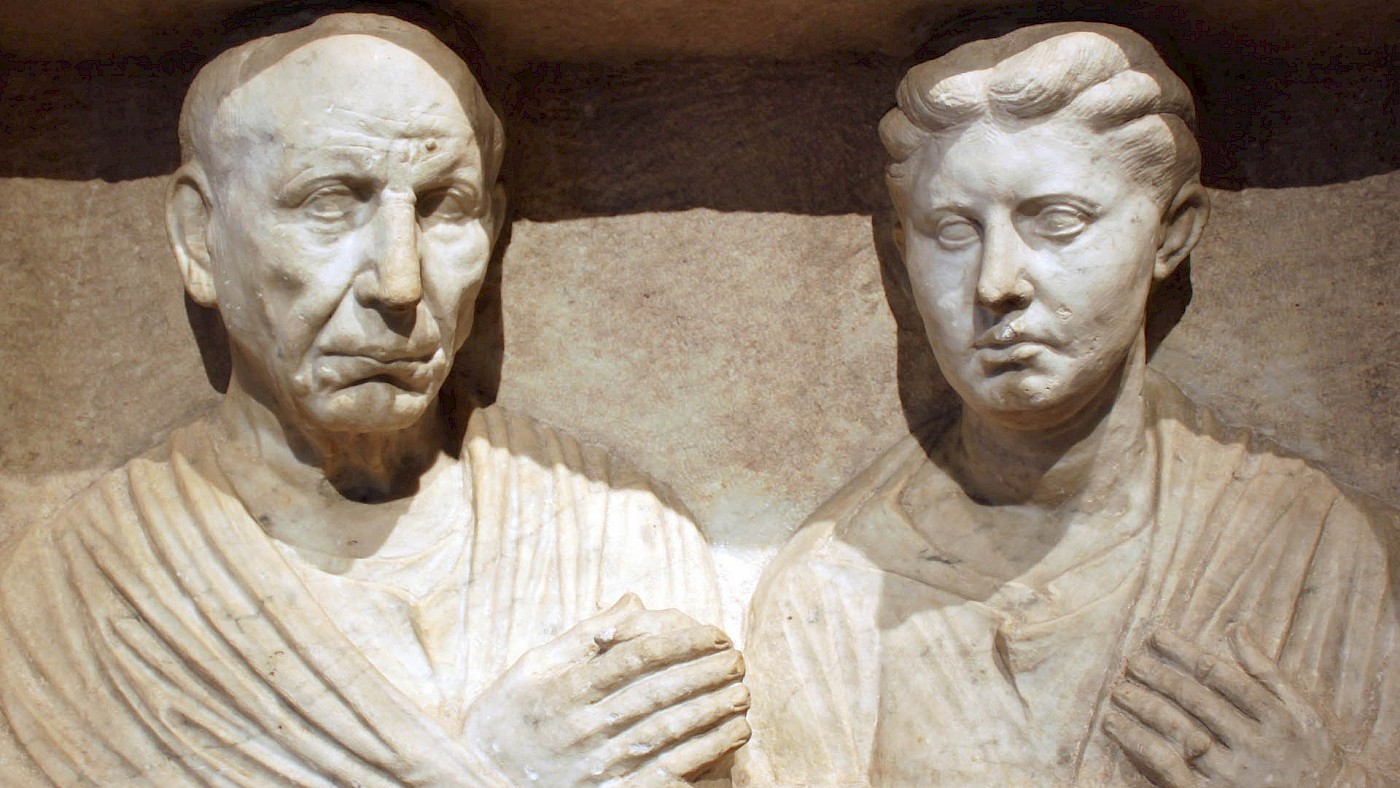Greek and Roman art is often lumped together rather unceremoniously as simply “Graeco-Roman”. There are good reasons for this. The ancient Romans borrowed – or rather adapted – freely from the ancient Greeks: stone architecture, sculpture, and so forth. But while Greek and Roman sculpture looks superficially similar, there are important differences.
Unlike the Greeks, the Romans were keenly interested in recording the features of contemporary people in a plain, unadorned, realistic style. Creating realistic portraits was a tradition that went back to at least the second century BC, and perhaps earlier. Etruscan canopic urns of the seventh century BC were sometimes modelled after people, with lids in the shape of human heads. While these are heavily stylized, they may have intended to represent the person whose ashes were contained within the urns themselves.
Roman “verism” emphasized realism: the smallest details were rendered, including imperfections of the skin, wrinkles, moles, and so on. This interest may stem from the importance attached to ancestors, especially among the Roman patrician (i.e. noble) families.
From at least the second century BC onwards, high-ranking Romans would display masks or portraits of their ancestors during public ceremonies. Such objects were proof of the long and noble lineage of the persons in question. Such portraits were often kept together, so that someone could literally come face to face with their forebears.
A couple from the Late Republic
A good example of realistic Roman portraiture is the relief depicted at the top of this article. It’s a funerary relief from Rome, dated to ca. 30 BC. It depicts Publius Aiedius Amphio and his wife Aiedia (Fausta Melior).

Note the realistic (“veristic”) manner in which the faces have been rendered. The relief would almost certainly have originally been painted, which must have rendered them even more lifelike. Note the creases in Publius’ forehead, as well as his moles and other imperfections. He has lost most of his hair and looks like he was at least 60 years old. His wife, Aiedia, is clearly younger, but she too has been rendered in a realistic fashion.
However, these people are not patricians. In the inscription, the man is identified as P Aiedius P L (with the nickname Amphio). P stands for Publius, but of importance here is the L: it stands for libertus or freedman. P L in this case means that he is Publius’ freedman, whose name (Publius Aiedius) he was given upon release. His original slave name was Amphio, which is Greek in origin, and used as his cognomen or nickname.
His wife, too, is a freedwoman. The inscription reads Aiedia P L / Fausta Melior, where again the P L means she was Publius’ freedwoman; her original name was Fausta Melior (literally, her name means “Fausta the Better”: one wonders if Publius Aiedius owned another female slave that he referred to as “Fausta the Worse”?). Perhaps she and Amphio met each other while still in their master’s employ.
Despite their status as former slaves, the couple clearly managed to acquire some status for themselves. They are both depicted in the manner of upstanding, relatively well-off Republican citizens. Amphio wears a toga, which is reserved for use only by free citizens. His wife wears two rings on her left hand as a symbol of their wealth.
It seems as if the couple is peering outside from behind a window. The relief may originally have been part of a larger funerary monument. It might have been a structure reserved solely for them, but it’s also possible that their remains were interred within their former master’s mausoleum, with this relief placed in one of the walls. In ancient times, cemeteries were located along major roads into towns, so that travellers to a settlement would come face to face, sometimes almost literally, like here, with that place’s former inhabitants.
